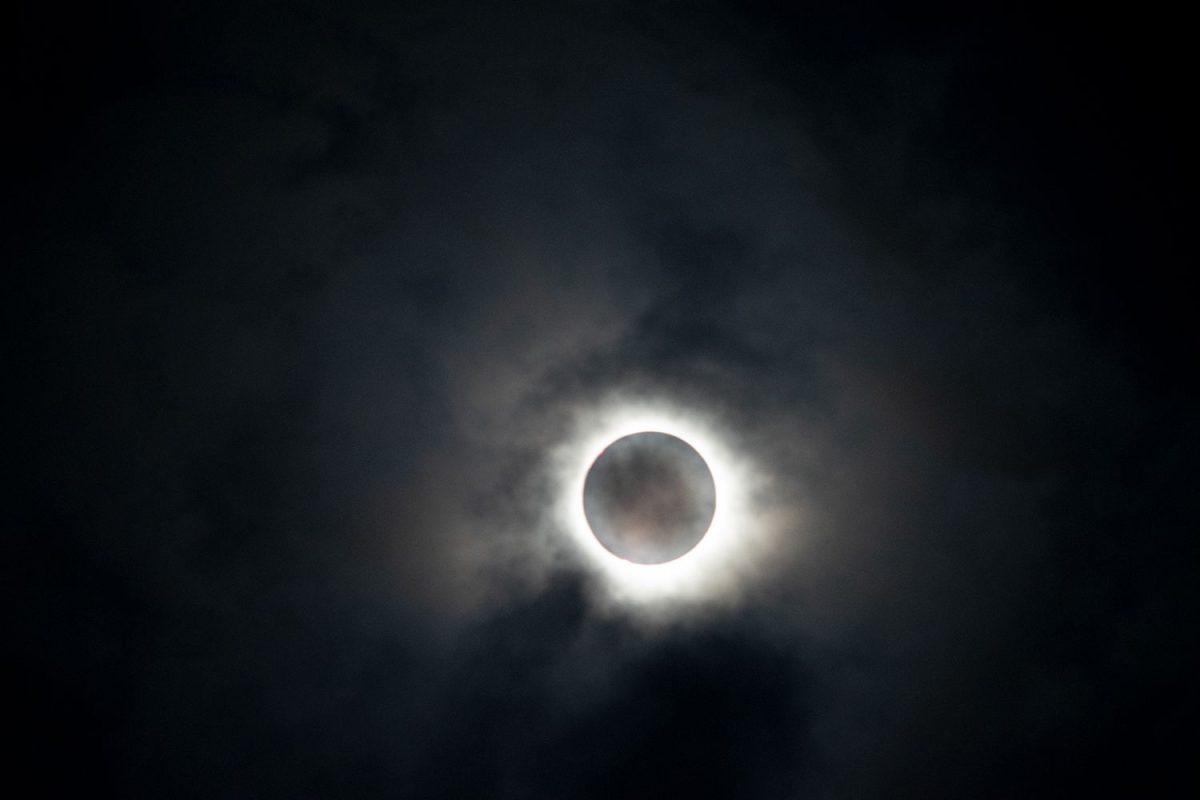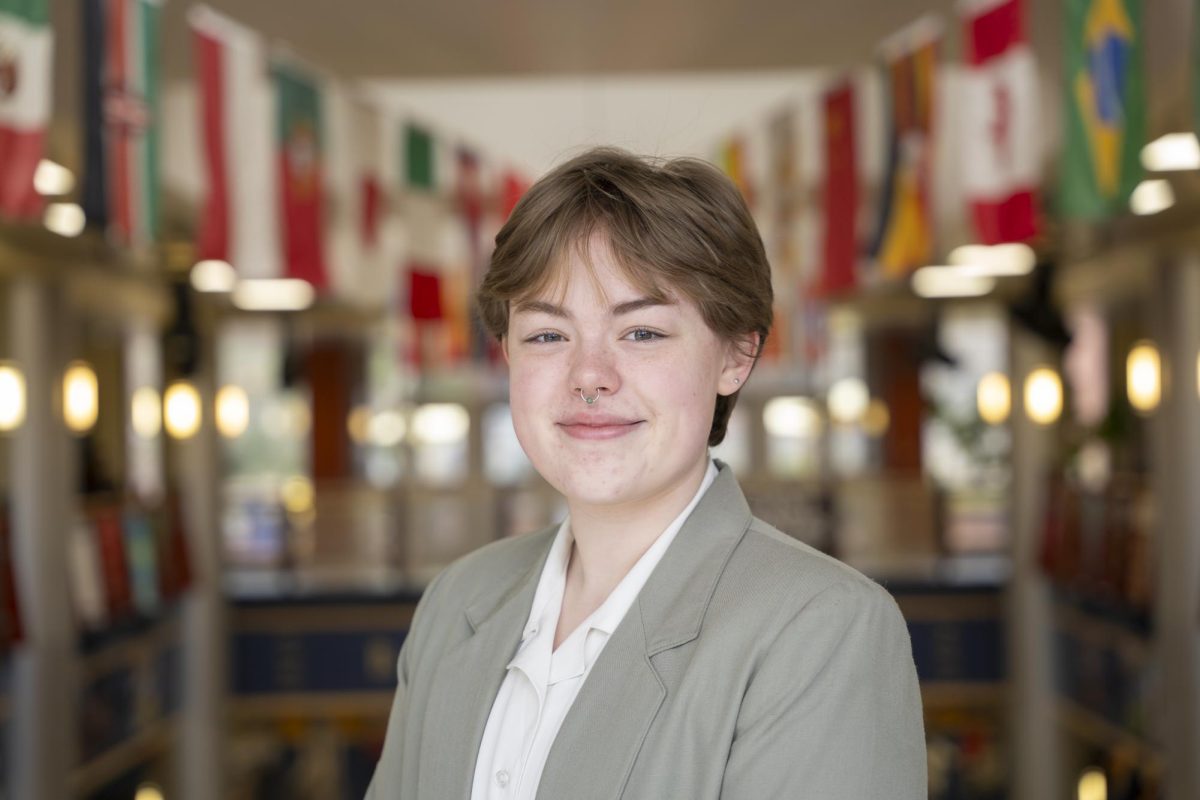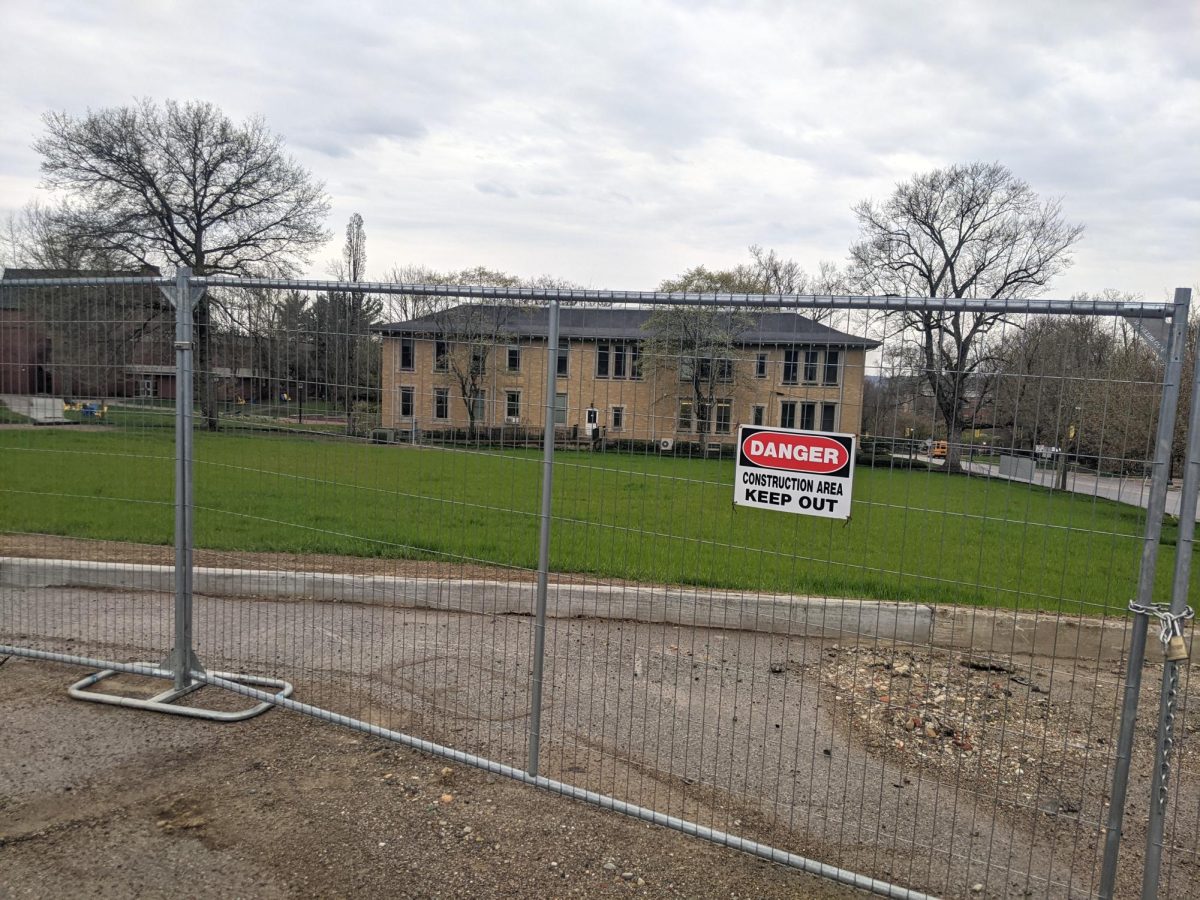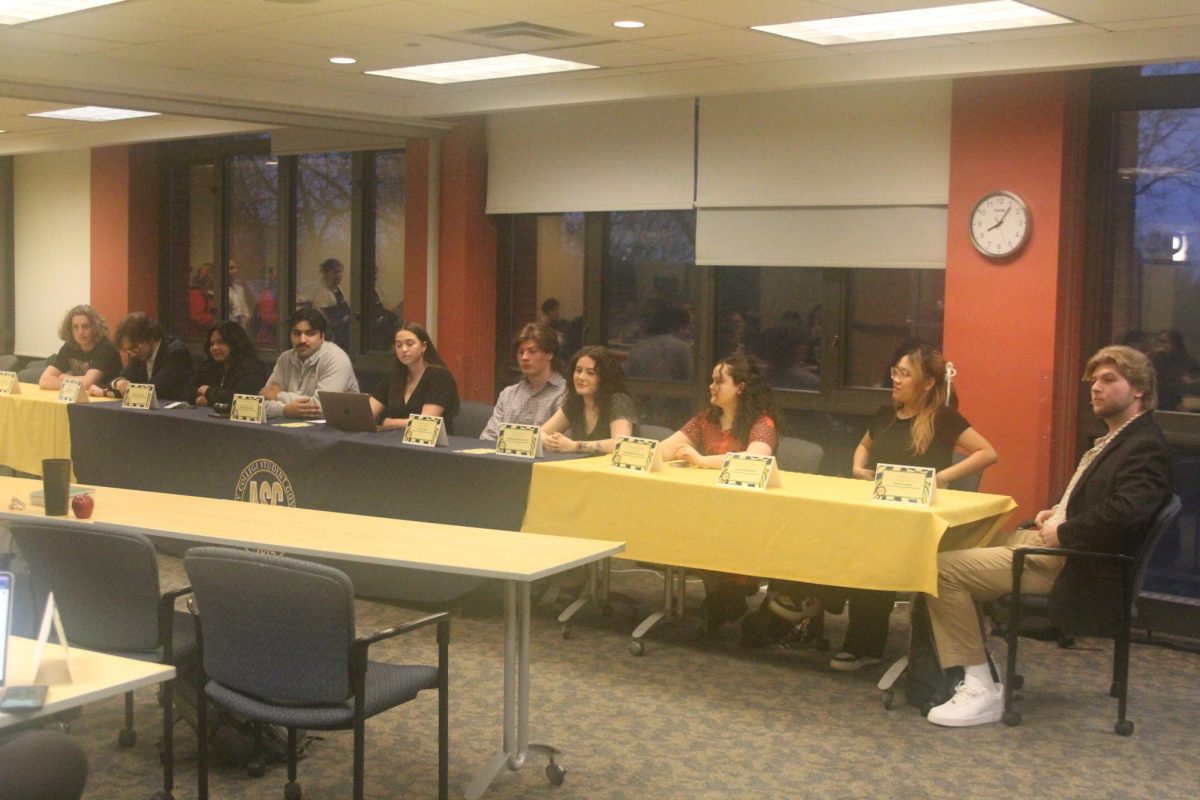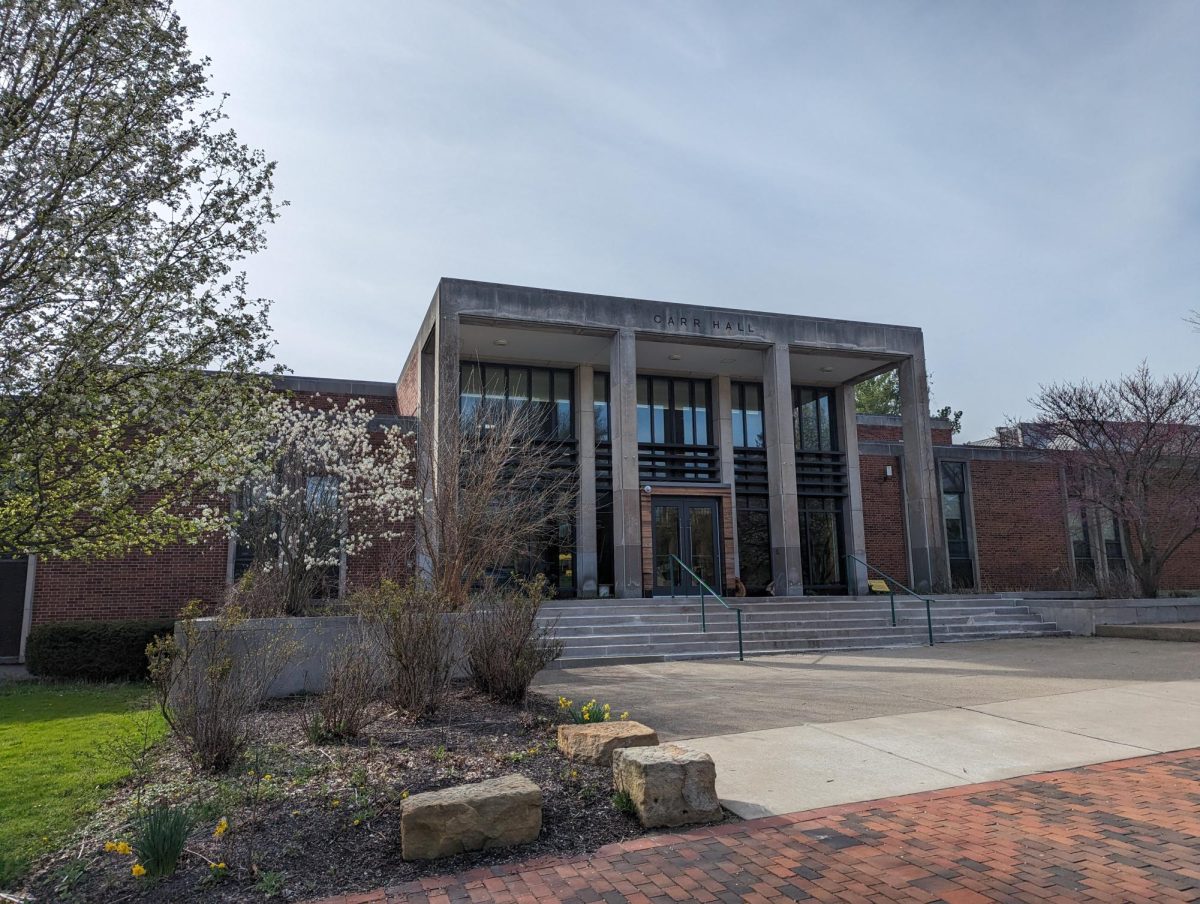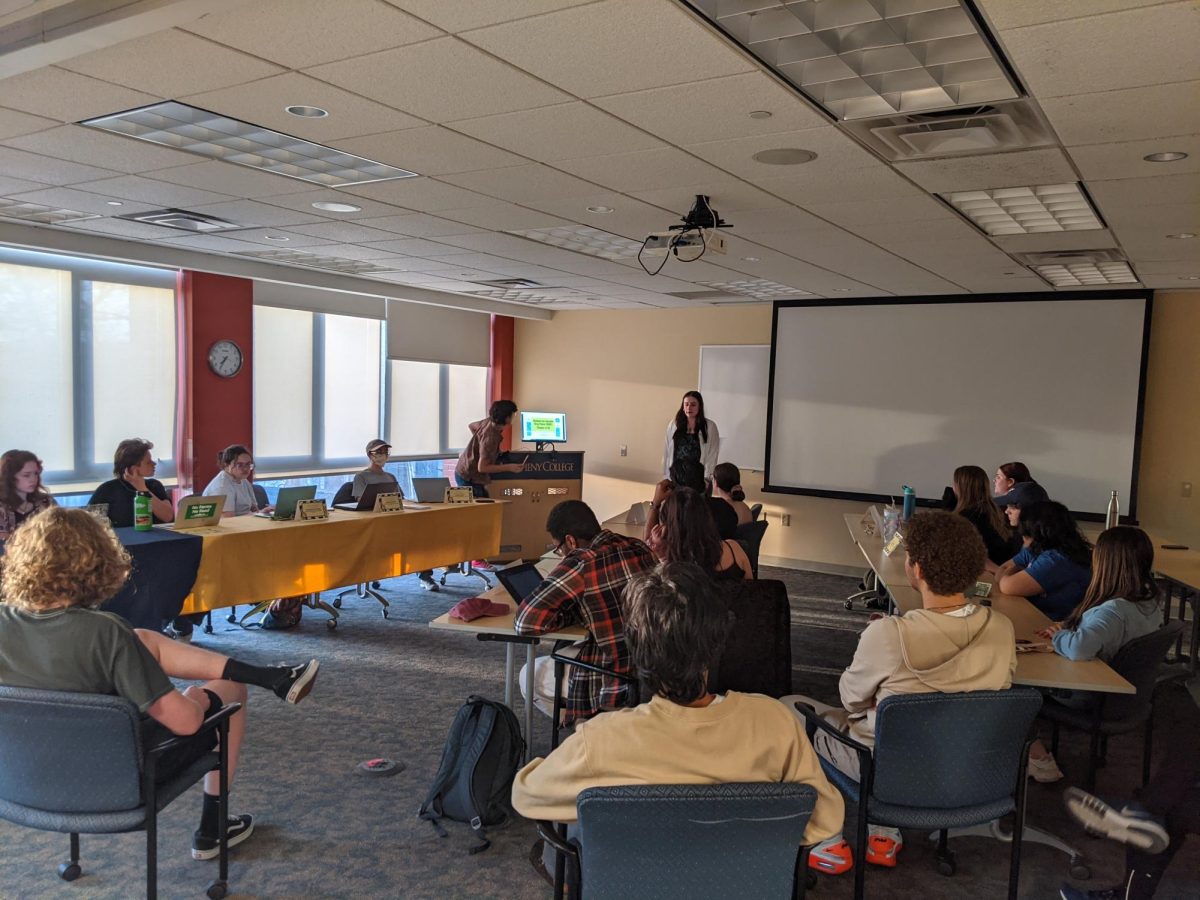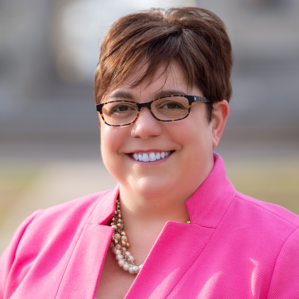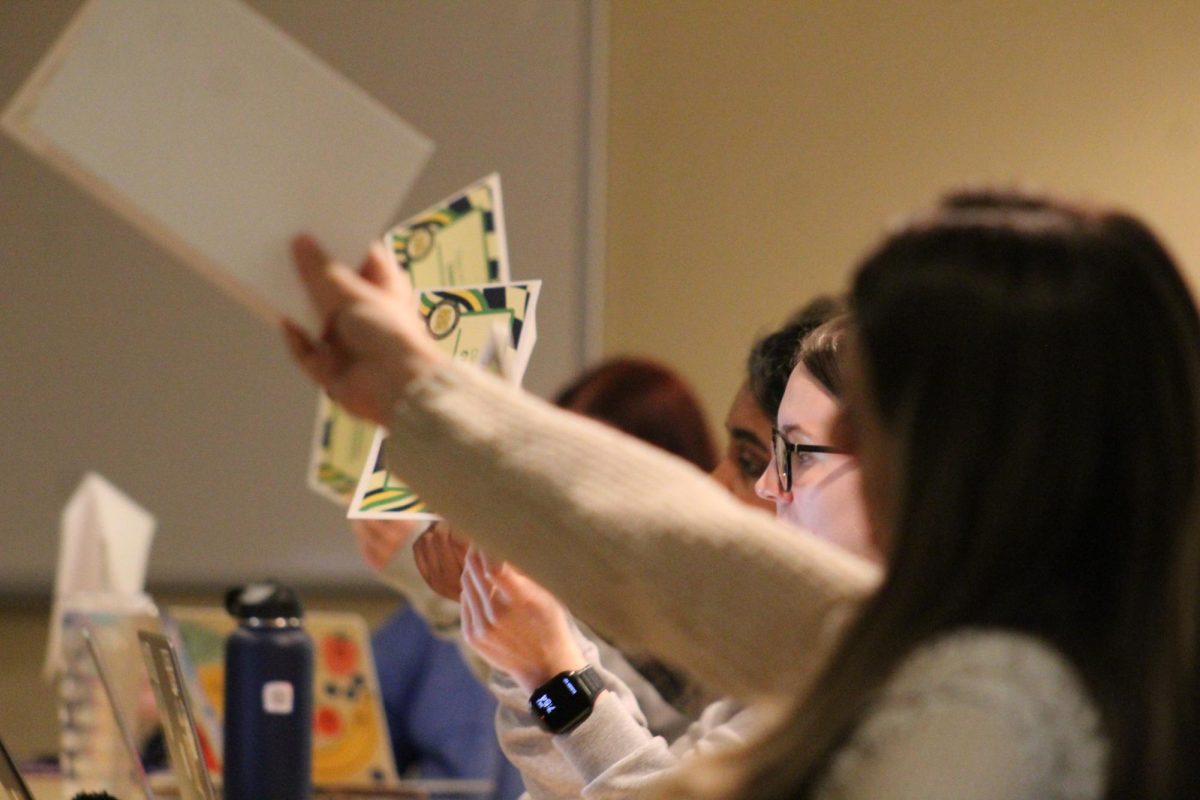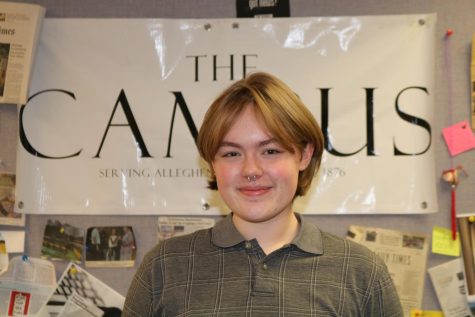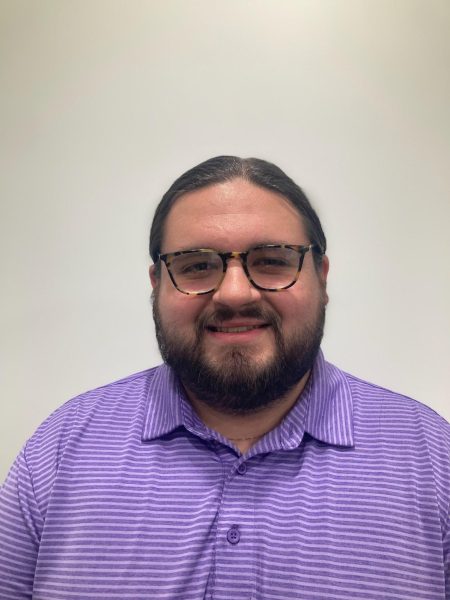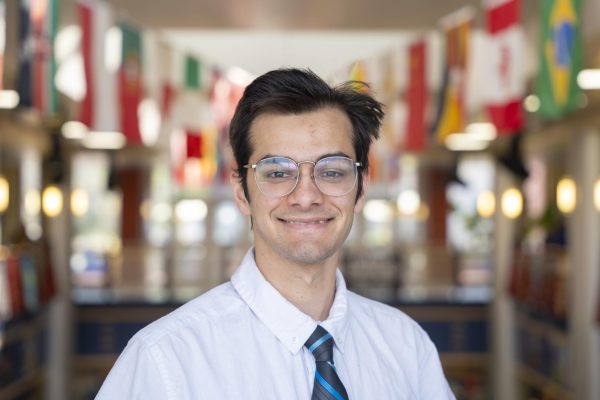Monday, April 8, 2024 was a once-in-a-lifetime experience for Meadville and its residents.
Literally.
At 3:16 p.m., Meadville and the surrounding area went dark from a total solar eclipse. For just over two and a half minutes, the moon perfectly masked the sun, casting shadows on the land and chilling temperatures on the Earth below.
As Professor of Physics Jamie Lombardi explained at an educational presentation the night prior, the last time an eclipse passed through Meadville was before Allegheny College existed.
“The last (total) solar eclipse in Meadville was in 1806,” Lombardi said. “If you want to wait for the next total solar eclipse in Crawford County, you have to wait 120 years — until the year 2144.”
Though eclipses are common — multiple solar eclipses occur every year — their position in relation to the Earth changes, creating a rare experience for those in the roughly 100-mile-wide band of totality. This eclipse was 112 miles wide and curved up from Mexico and through a narrow path in the U.S. before reaching the Northeastern states and the border between the U.S. and Canada.
Since the moon’s orbit is predictable, Lombardi explained, eclipses well into the future or past can be calculated with incredible detail.
“These eclipses happen on predictable patterns,” Lombardi said. “Scientists can tell you down to the second when it’s going to start tomorrow, or at our location, or at any other given location, and you can predict eclipses into the future.”
“There are patterns to that motion that lead to there being eclipses that are in the same cycle as one another — the so-called Saros cycle — every 18 years and 11 days,” Lombardi added.
A total eclipse happens when the moon passes in front of the sun, such that only the corona, or outer edge, of the sun can be seen. Lombardi explained that the difference between a total eclipse and a partial eclipse makes all the difference when it comes to experiencing the full effects.
“The difference between a total and a partial eclipse is the difference between night and day,” Lombardi said. “There’s a difference between 99% and 100% that’s qualitative, and we’re in that zone.”
The rarity of an eclipse passing through Meadville, along with the unique experience of totality, brought hundreds of people from around the country to Robertson Athletic Complex. Events at the complex’s Frank B. Fuhrer Field took place from noon to 4 p.m., when the second partial phase of the eclipse ended.
Shuttles transported students and visitors from Allegheny’s campus to the field. There, “Allegheny Eclipse” T-shirts were available for sale to the public, and available to the first 300 students for free. Food was also for sale and included Moon Pies and Sun Chips to celebrate the occasion.
The Society of Physics Students and Astronomy Club were set up to teach visitors about the science of the eclipse, demonstrate different ways of viewing the eclipse leading up to totality and help kids make eclipse-viewing goggles of their own.
Charlie Gibson, ’25, is president of Astronomy Club and was set up with a variety of ways to view the eclipse. Visitors could look through telescopes equipped with a film similar to that found in eclipse glasses.
“The telescope has the same filter as these,” Gibson said, holding up his standard eclipse glasses. “The only difference is the telescope gives you the option to kind of get a more magnified, more detailed view of the sun.”
Gibson also demonstrated an indirect way of viewing the eclipse. A poster board with small holes punched throughout — spelling out “Allegheny” and outlining the image of an alligator — allowed viewers to see circles from the pinpoint of light, then the various phases of the moon passing over the sun.
“When the eclipse begins to happen, it’s not going to be circles; it’s going to be starting with the phases of the moon, like a gibbous and then a crescent and then completely dark,” Gibson said.
Colanders served a similar purpose leading up to totality, and makeshift viewing devices made out of cardboard boxes, styrofoam plates with lenses and Pringles cans were also seen throughout the crowd of people gathered on the field.
Family and friends of students, along with those who have no affiliation with the college, spanned the entirety of the football field. Gathered on blankets and in folding chairs, visitors from different states had made the journey to see the eclipse.
One visitor, Erin Slezak, traveled several hours with her father, grandmother and a family friend.
“I saw the one in 2017, it was my first time,” Slezak said. “I’m actually from Rockville, Maryland — I came up here specifically to see it here.”
Terry Belles, ’93, made the pilgrimage from his home in Kittanning to see the eclipse, driving nearly two hours with his wife and daughter.
“I went to college here for chemistry,” Belles said. “But I loved astronomy.”
Belles was unable to make it to Meadville for the partial eclipse in 2017 because he was at work that day.
He brought his own telescope to the event, spending a large portion of the afternoon allowing people to catch a magnified glimpse of the sun during the buildup to totality.
Belles described the view through his telescope as people looked through it.
“You should be able to see some of the sunspots,” Belles said. “There’s two of them right in the center that are almost right beside each other.”
Belles described the sunspots as being more visible due to them being colder than the rest of the surface of the sun.
“I’ve been preparing for this a while,” Belles said. “This is a sun filter on here. Even binoculars will burn your eyes.”
Belles’ daughter ran onto the scene while he was describing his telescope.
“There’s my other main reason for coming here,” Belles said. “My daughter.”
Belles continued to allow a wide array of people to observe the sun through his telescope, including Assistant Professor of Business and Economics and International Studies Chris Finaret. Finaret was there with his wife, Associate Professor of Global Health Studies Amelia Finaret, their kids and several extended family members.
“The last one — I mean that was really fun and that was just partial,” Amelia Finaret said, referencing the 2017 partial eclipse that passed over Allegheny. “I’m pretty excited.”
Her aunt traveled from New York City to see the eclipse.
“2017 — I went to South Carolina to be in totality,” Mary Fischer said. “Which is why I made the six-, seven-hour trip here.”
When asked what she thought totality would be like, Finaret’s daughter Lorien, 6, said it would be “probably really dark.”
And she was right; at just after 3:16 p.m., the increasingly-darkened sky turned even darker. Many in the crowd screamed out in excitement, as did some kids who ran around the field thrilled. Many still chatted among their groups in quiet awe. Temperatures — which began to drop even as the moon partially covered the sun — were noticeably lower. The sky became a deep purplish gray, and clouds from earlier in the day were no obstruction; the entire visible horizon turned to dusk in the middle of the day.
“I got chills,” Belles said. “And not from the temperature drop.”
Belles was not alone in his reaction.
“I understand why people used to worship the sun,” Dean for the Student Experience Ian Binnington said, as light returned and people started to leave.
“Holy f—,” added Professor of Political Science Sharon Wesoky.
Editor-in-Chief Sami Mirza contributed to the writing of this article.



